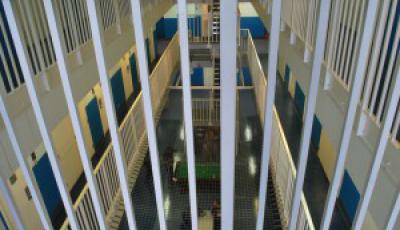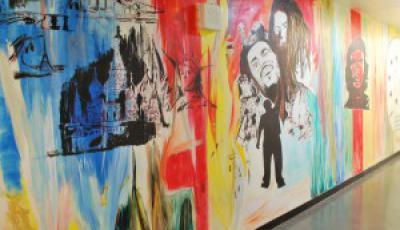From the Field is Border Criminologies’ ‘mini-post’ series featuring news from researchers currently in the field. In this post, Mary Bosworth builds on Luigi Gariglio’s post earlier this week on the challenges in obtaining research access for including photographs in prisons research. Here, Mary discusses the challenges in integrating photographic work into criminological research based on recent experiences of photographing IRC Colnbrook.

Those establishments which have allowed us to take photographs have varied in their oversight. All cite security concerns. Some have checked all the photos thoroughly accompanying us as we walked around, others have been content to let us get on with it. In all cases, so far, we have had limited time to take pictures. These are not ethnographic images, but documentary ones.

Then there are ethical questions. During my day at Colnbrook, a number of the detainees asked to have their photographs taken. While I had an official release form to permit such requests, I was concerned that over a brief visit like this, I could not be entirely confident that the detainees had understood what it could mean. What if, after I left, the men changed their mind? How would they feel if I selected an image with them in it and reproduced it widely? What about shots in which detainees or staff were in the background, present but not individually distinguishable? Did I need their written permission as well?

Though admittedly striking, I did not wish to use either of those photographs, since they do not reflect daily life in IRCs, where segregation is rarely used. To put a cell block on the front cover would suggest that IRCs are prisons. While many experience them as such, and notwithstanding the similarities between these institutions, they are not the same. There are many important political and intellectual reasons why we need to be mindful of their overlaps and differences.

Finally, we need to consider how the introduction of a camera might alter the research relationship. Before I went to Colnbrook with my camera and tripod I had anticipated that the men would be more keen to engage with me than they had been when I wandered around with just a notebook and pen. While some did eagerly approach, asking if I was from the BBC, in fact, the presence of a camera did not seem to attract many of them. Some asked explicitly that I did not photograph them, while others remained indifferent. To understand better the impact of a visual methodology, I would like to spend more time with a camera inside. I would also like to involve the men and women in producing images themselves. For now, I'm sorting through the hundreds of images we do have, considering what new perspective they shed on life in detention and the research process.
Any thoughts about this topic? Post a comment here or on our Facebook page. You can also tweet us. See also other From the Field mini-posts:
- From the Field: Betrayed by Norway
- From the Field: Sarah Turnbull’s Current Research at Yarl’s Wood
- From the Field: How to Build a Network (of Sanctuary)
- From the Field: ‘Going to Prison’ and Accompanied Assumptions
- From the Field: Ticking-boxes at HMP Huntercombe
- From the Field: Marion Vannier’s Day in Prison
- From the Field: Ines Hasselberg’s Research among Foreign-National Prisoners
- From the Field: Sarah Turnbull’s Current Research in Immigration Detention
- From the Field: Bethan Loftus’ Research Trip to Canada








